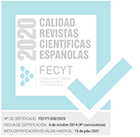Xanthoria parietina as a biomonitor of airborne heavy metal pollution in forest sites in the North East of Morocco
Resumo
Xanthoria parietina, common foliose lichen, growing in its natural habitat, was analysed for the concentration of five heavy metals (Fe, Cr, Zn, Pb and Cu) from different forest sites of North East of Morocco (Kenitra, Sidi Boughaba, Mkhinza, Ceinture Verte near Temara city, Skhirate, Bouznika and Mohammedia). The quantification was carried out by inductively coupled plasma - atomic emission spectrometry (ICP-AES). Results were highly significant p<0,001. The concentration of metals is correlated with the vehicular activity and urbanization. The total metal concentration is highest at the Kenitra area, followed by Ceinture Verte site near Temara city, which experience heavy traffic throughout the year. Scanning electron microscopy (SEM) of particulate matter on lichen of Xanthoria parietina was assessed as a complementary technique to wet chemical analysis for source apportionment of airborne contaminant. Analysis revealed high level of Cu, Cr, Zn and Pb in samples near roads.
Downloads
##submission.format##
Licença
Lazaroa is an open access journal to promote global exchange knowledge. It facilitates unrestricted access to its contents from the moment of publication in its electronic edition. The originals published are property of the Universidad Complutense and it is mandatory to cite such source in case of total or partial reproduction. All contents are distributed under a Creative Commons License 4.0 (CC BY 4.0). This circumstance must be expressly stated in this way when necessary. You can check the informative version and legal text of the license.
Lazaroa does not charge for download or publishing any article.








